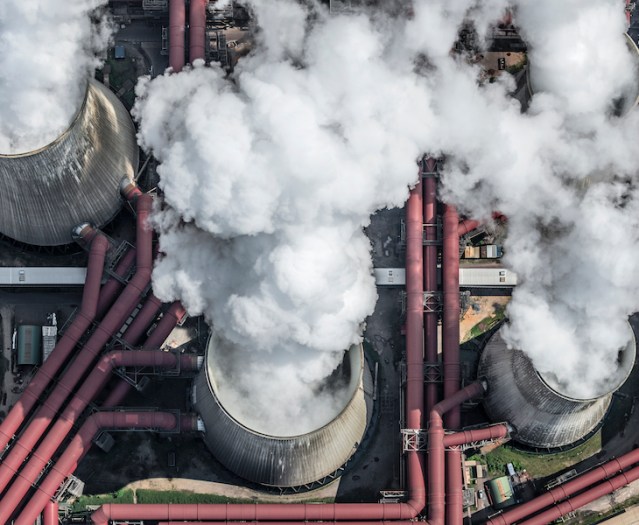If you pay attention to voluntary carbon markets, particularly if you’ve been working with them for more than a few years like I have, you may have found the past year of seemingly constant media coverage and debate to be rather dizzying. Journalists writing about baselines and project methodologies? John Oliver spending 10 minutes of air time on additionality? Whoa! It wasn’t that long ago that even the most climate-savvy journalists weren’t paying much attention. Hardly anyone was buying, selling was a slog.
There wasn’t much to write or debate about because not much was happening.
Today, it’s safe to say we’re not in Kansas anymore, unless by Kansas you mean agricultural soil carbon projects or geologic carbon storage. Voluntary carbon markets and corporate participation in them have prompted debates over what’s working, what’s not, how to fix them and who should make the rules. They’ve become some of the hottest topics on the climate agenda. There’s a lot of debate because a lot is happening.
And while healthy debate can point us to better approaches, more transparency and bigger ambitions for our climate goals, it can be less helpful when it treats climate solutions like a zero sum game, when it runs the risk of lowering ambition, or gives us the sense that there can be only one answer — and one legitimate road — to reaching our climate goals.
Technology vs. Trees
A particularly heated debate has arisen for one project type in particular: carbon removal projects. Carbon removal refers to projects that, rather than reducing the amount of CO2 going into the atmosphere, actually remove CO2 that is already there. These projects, combined with dramatic emissions cuts, enable us to reverse the concentration of greenhouse gas emissions (GHG) in the atmosphere.
Carbon removal is an interesting space within voluntary carbon markets, because it’s one of the few designations that includes projects that are nature-based — for instance, restoring degraded land with natural forests or shifting agricultural practices to increase trees in the landscape — as well as those that are technology-driven, such as direct air capture and storage, the creation of materials that incorporate long-lived carbon storage, such as biochar, or bioenergy with carbon capture and storage.
Much of the media and social media information on carbon removal might lead you to believe that you’ve got to be pro-one type of carbon removal and anti-the other. You’re either on team trees or team technology, and ever the twain shall compete.
At Meta, however, we believe that both approaches are needed in our climate change efforts, and that treating them like mutually exclusive options is risky: risky for a carbon removal credit buyer’s portfolio, risky for a corporation’s climate ambition, and risky for securing and deploying the climate finance we need.
Uniting Team Technology and Team Trees
Let’s dive into a couple of the main points that have been used to divide carbon removal into Team Trees and Team Technology.
Myth
Technological carbon removal is too expensive and can’t reach scale fast enough to meaningfully contribute to climate mitigation.
As a founding member of Frontier, a collaborative commitment to buy over $1 billion of permanent carbon removal between 2022 and 2030, Meta is supporting investment into new high-mitigation-potential approaches, such as direct air capture, biomass burial, and bio-oil sequestration. Such innovations will be necessary at scale if we’re to have a real chance at hitting our ambitious climate targets.
As early buyers, we know that the price per ton must come down in order for these new approaches to attract deep voluntary carbon market interest. That’s why we are rolling up our sleeves to do the hard work of figuring out which approaches are safe and sustainably scalable, while also signaling to the market that we’ll commit to buying technological carbon removal if projects innovate, test, and scale successful approaches.
Now is the time to look at how technological carbon removal can play a part in your procurement strategy: to signal commitment to a future where these approaches are drawing down gigatonnes of CO2 from the atmosphere and durably storing it for the long term.
Myth
Forests are temporary, technology is permanent.
One of the main criticisms aimed at Team Trees is that they serve only as temporary carbon removal and storage, while direct air capture and enhanced rock weathering are permanent.
While it’s true that individual trees each have their own lifespan of decades to centuries, forests can last for much longer. We have forests on our planet today that have persisted for millions of years. Forests represent a perpetual climate solution, one we can’t do without. Without them, we lose on climate and an inhabitable planet. Even if we find ways to suck all excess CO2 out of the atmosphere and store it safely with technology, if we lose forests, we still lose.
For sure, storing carbon by growing forests includes risks that don’t apply to CO2 stored underground or in a stable rock formation through technological approaches. Fires, droughts, and pests are having increasing impacts on forests globally, and climate change will exacerbate these risks for future forests. But the top reason for forest carbon reversals is still human decisions to degrade and deforest them. And we can do more about all of these risks.
What if we price in the costs to bring down durability risk of forest carbon removal projects in meaningful ways? How much would it cost per ton to meaningfully impact the largest driver of forest carbon reversals: human decisions to destroy forests? For example, if forest restoration projects were paid $100/ton today to reduce the reversal risks they face, whether they be fire, timber or land value, or pest incursions, what could they do to bring that risk down that they can’t do for $25/ton? Given all of the important global and local impacts of healthy forests, shouldn’t we be doing more to understand and reflect the impact of price on durability? This is an area that needs more research and innovative thinking.
Myth
Companies cannot responsibly address their emissions with any project that may not still hold stored carbon in 1000 years.
Some voices from Team Technology claim that it’s an irresponsible choice for a corporate buyer of carbon removal credits to choose natural carbon removal for offsetting residual emissions because of a mismatch between how long the corporate emission stays in the atmosphere and how long trees live.
Setting aside the debate over how long forests can endure, even if a significant portion of the natural carbon removal projects that companies support with their net zero finance last for decades or centuries rather than a thousand years, they still provide a vitally important role in reversing the impacts of emissions. Given the crucial role of the coming decades in our ability to reach global targets, and given the tools and instruments that our societies can deploy to express and enforce responsibility and commitment, it is this decades-to-centuries timeframe that we should be most focused on. Global climate targets represent a shared commitment by all countries to a certain level of mitigation ambition – success or failure will directly impact people’s lives and livelihoods. So we can’t justify substituting any delay in action that may be required by new technologies for the tried-and-true solutions we have today. What happens a millennium from now is much less material for the intersection of climate, durability and corporate responsibility than what happens in carbon removal over the next ten, fifty or one hundred years. Forests and natural carbon removal can deliver on climate mitigation now, at scale, with at least decades-to-centuries durability, with low risks to safety, reasonable costs, and legion beneficial local environmental and social impacts.
Forests are not only a perpetual climate solution, they are an indispensable climate solution. You can’t substitute them for fans that suck CO2 out of the atmosphere, even though these new technologies will be crucial to meeting climate targets. Unlike most carbon removal technologies, we can’t substitute forests for any other climate solution. They have to be part of the mix, no matter what the rest of the mix looks like.
When it comes to carbon removal, it’s not a zero sum game. Natural and technological carbon removal are both necessary, vital solutions for corporate climate action, and they even combine to showcase some amazing approaches that reveal how arbitrary the line between them can be. Team Technology vs. Team Trees is an unhelpful distraction from the very real and exciting challenges that carbon removal presents. Both nature-based and technology-based carbon removal offer powerful tools to complement companies’ priority efforts in reducing their emissions to the maximum possible levels. They each represent vital pieces of the mitigation puzzle, offering pathways to impact at scale, with durability covering the crucial decades-to-century time frame and beyond.
It’s time to leave the technology vs. trees debate behind and work together to grow corporate climate finance responsibly. Anything else is just too risky.
News
Get the latest news about our sustainability work, download reports and resources and explore our energy dashboards.

Frontier announces direct air capture (DAC) offtakes purchase on behalf of Founding Members with CarbonCapture Inc. and Heirloom
CarbonCapture and Heirloom will remove a total of 72,000 tons on behalf of Frontier buyers, including Meta, by 2030.
November 16, 2023
Investing in Value Chain Emissions Reduction Projects
The scope of this RFI is specific to our efforts to invest in value chain emissions reduction projects. As such, we are initiating an RFI for value chain emissions reduction projects so that we can directly connect with entities that are positioned to originate, host, and/or support a value chain emissions reduction project or the increased offtake of low-carbon solutions or materials.
August 1, 2023
Introducing Meta’s 2023 Sustainability Report
For over a decade, Meta has been focused on reporting on its environmental impact. Our efforts to accurately understand our impact helps us more efficiently chart a course of action to minimize our emissions, as well as the energy and water used to power our business, products and workplaces—while protecting workers and the environment in our supply chain.
July 25, 20232025 Sustainability Report
Learn more about our progress as we work to achieve net zero emissions across our value chain and become water positive in 2030.

